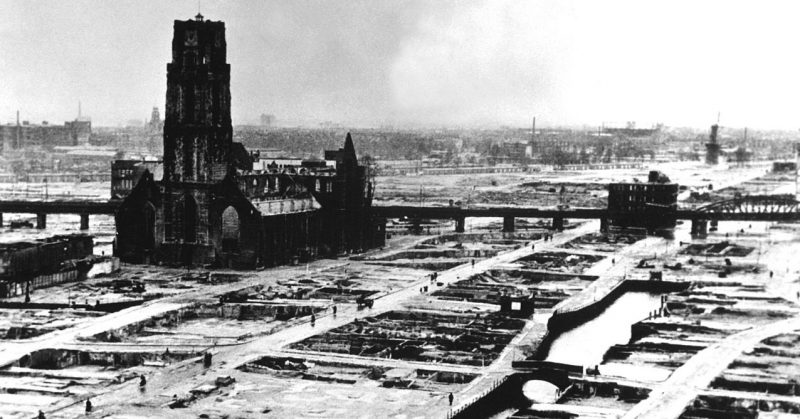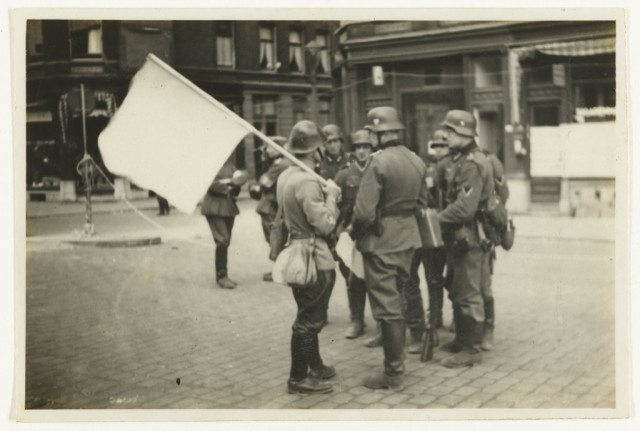The Battle of Rotterdam began May 10th, 1940, and ended with the bombings on Rotterdam May 14th, 1940. German forces saw the Netherlands as an opportune place to build an Air Force base, as well as to station soldiers.
May 10th, the invasion of the Netherlands, including Rotterdam, began. The country had looked to stay neutral in the war, as they had done in World War I. This was due in part to their military, which lacked the necessary vehicles, aircraft, and troops to fight in the large war.
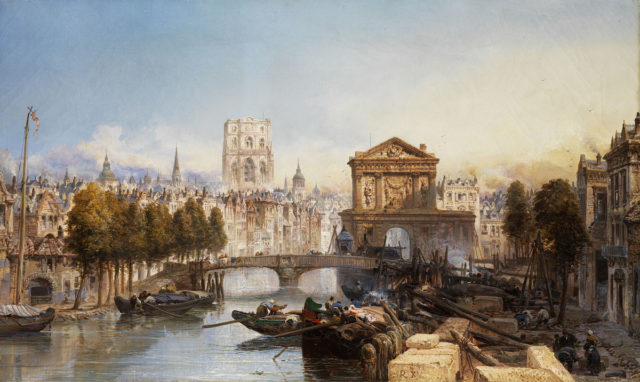
As a large port city in South Holland, Rotterdam was an ideal place for Adolf Hitler to occupy. Not only did it offer a close proximity to Great Britain, but it also had access to waterways. Hitler intended to capture the Netherlands in just one day. While he failed to meet that goal, German forces took over the country May 15th, one day after the Bombings on Rotterdam, which decimated the city.
Rotterdam lacked robust defense systems that you would find in other cities and bases, but it did have more troops and artillery on hand for the battle. None of that would matter, when on May 14th, the Luftwaffe bombed the city. Rotterdam went from being a bustling port city to a wasteland, in just one day. Here are eight essential facts for understanding the decisive bombing.
1 Not As Deadly As First Thought
The idea of a city being wiped from the landscape, sounds like the perfect storm for a large death toll, but this was not the case. At first, the Dutch government announced a death toll of around 30,000 civilians. This was later found to be incorrect.
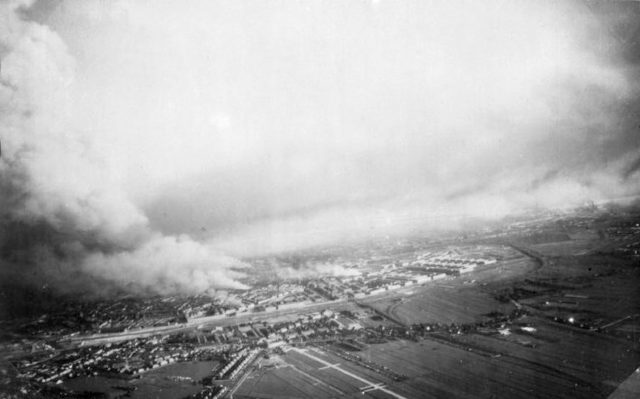
While the exact number of those killed is still contested, it is believed that around 1,000 people were killed during the bombings. It also left many citizens homeless. Around 85,000 people lost their homes in the bombings.
2. Almost Did Not Happen
The morning of the 14th, the Dutch received an ultimatum from the Germans: surrender, or Rotterdam will be destroyed. The Dutch were considering it, but requested a German officer to sign the notice with name and rank. At some point in this long sequence of communication, German bombers were ordered to destroy the city.
As the final notice containing the German officer’s signature, with name and rank, was sent, a group of 27 bombers arrived to the city out of the south. Red flares were drawn by the Germans to protect from friendly fire. It was too late for the city, and the first three bombers dropped their payloads. The remaining 24 turned westward as they saw the red smoke.
The second group of bombers, numbering 60 planes, then arrived from the north. This group couldn’t see the red smoke at all, and unleashed a fury of 100 and 500-pound bombs all over the city. The attack lasted 15 minutes.
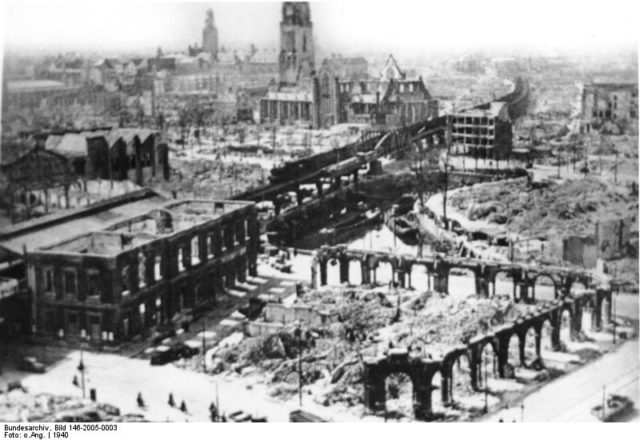
3 Total Destruction
About one square mile of the city was completely destroyed. In total, over 25,000 buildings were leveled. Below is the breakdown of the type of buildings destroyed
- 24,978 homes
- 2,320 businesses
- 24 churches
- 62 schools
- 775 warehouses
4 Only a Handful of Buildings Survived
Only a few buildings survived the bombings. The most well known of these buildings is the Witte Huis, which was built in 1898 as the first high-rise building in Europe.
This building did suffer some damage, and today, you can see bullet holes around the buildings exterior.
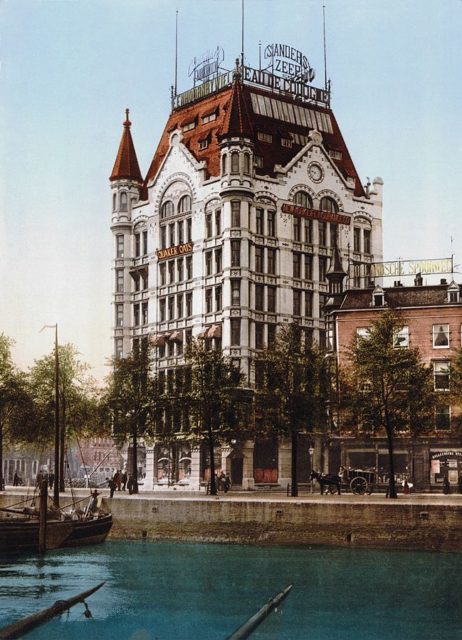
Sint-Laurenskerk is a well-known church that survived the blast as well. The church was built in the 15th and 16th centuries and managed to survive the Rotterdam bombings. The building was heavily damaged but went on to be restored in the 1950s and 1960s.
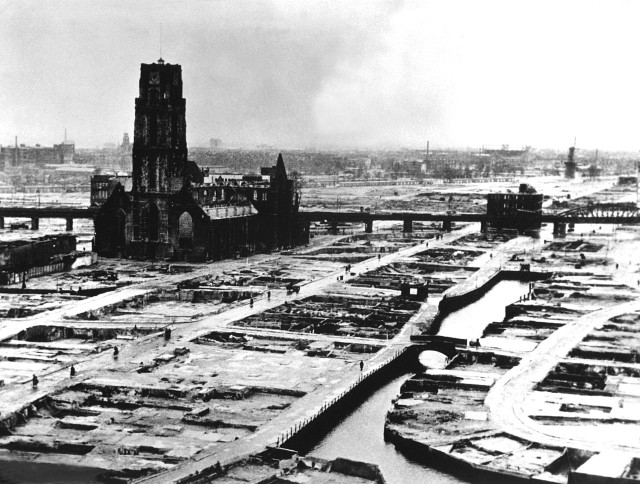
5 Rotterdam Was Set Ablaze
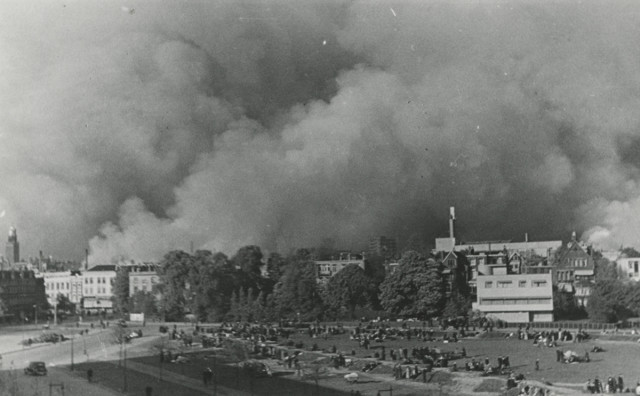
Many of the buildings that were struck by bombs caught fire. These fires would go on to become uncontrollable, worsening in the coming days as winds shifted.
Over the course of a week, the fires began to join and create one huge inferno. It’s been said that at nightfall, on the first night after the bombings, the sky was red from all the fires.
6 Quick Surrender
It didn’t take long for the Dutch to surrender. Shortly after the bombings, a Dutch colonel met with a German Sergeant on a bridge, to discuss a surrender. At that time, the Dutch surrendered the city to Germany.
The Germans then took control of the city as the blaze raged on. News of the surrender didn’t make it to all Dutch troops within the city in a timely manner. Due to this, there were several small firefights which led to several more deaths.
7 Changed The British Approach to Bombing
Prior to the Rotterdam bombings, the Royal Air Force was to only bomb military zones and infrastructure of importance, including railways, ports etc. They were to avoid densely populated civilian areas. Now those areas were occupied by the enemy, that policy had to change.
The first orders for the Royal Air Force was to attack targets in the Ruhr that could have killed civilians as well as military personnel. This included oil plants, as well as other industrial plants that could be fueling the German war effort.
8.The Rebuilding Process Was Slow
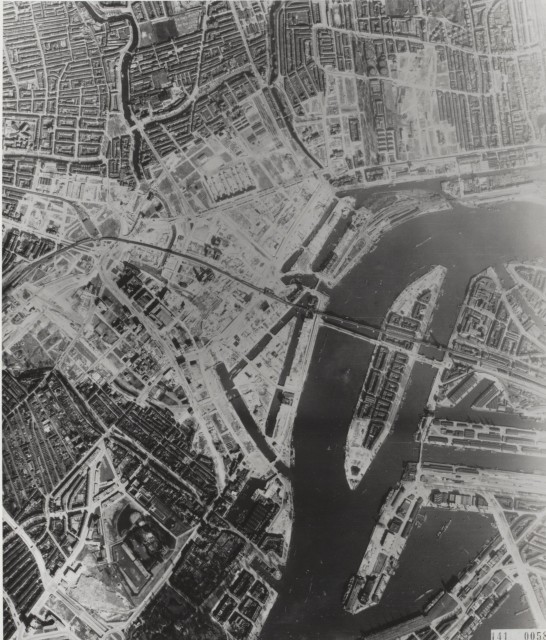
After the bombing and subsequent fire, the decision was made to raze everything but a handful of buildings within the city center. Plans were presented to city officials within one month to rebuild the city; these plans were based on the city’s prior layout and structure. Prior to the bombings, the city had struggled with overcrowding issues, as well as small, poverty-stricken neighborhoods.
So when the plans were drawn up, the idea was to resolve many of the city’s previous issues. The rebuilding of the city lasted until the 1970s. During this period, the area remained windy because of the wide open space at the heart of the city. In the 1980s city officials pushed for development of apartment buildings as well as skyscrapers to develop a skyline. Today, the city has a handful of skyscrapers that are spread out across the city.
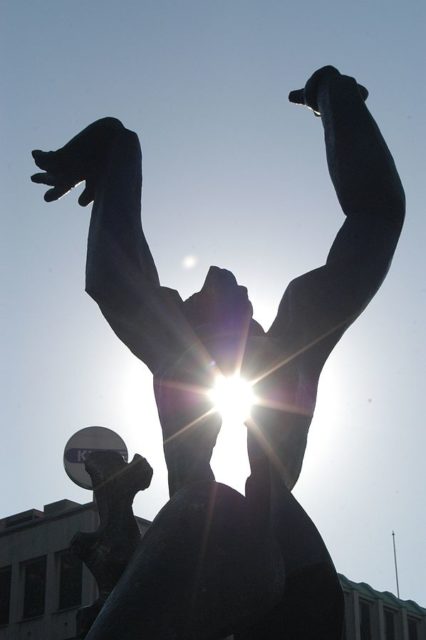
Although it took almost four decades for the city to fully get back on its feet, many now believe Rotterdam is better than ever. Though the city has moved on from this dark time, it doesn’t shy away from its past.
Across the city, you can find memories of the bombings, such as red lights with a fire logo on them, which are located on streets, sidewalks etc. These make up an outline of where the fires raged from the bombings. Today, Rotterdam is not only one of the largest cities in the Netherlands, but it also has one of the largest ports in the world.
